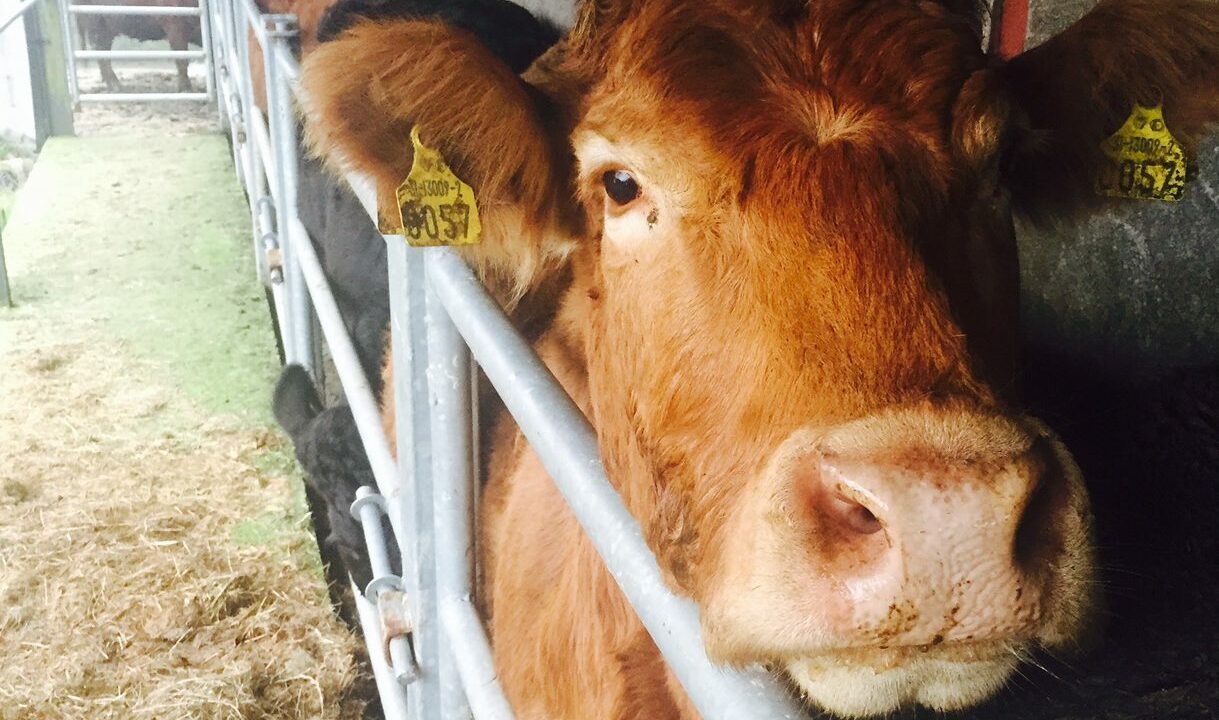The Department of Agriculture, Food and the Marine (DAFM) has declined to say whether the national programme to eradicate Bovine Viral Diarrhoea (BVD) will continue in 2024.
The compulsory disease control programme for all cattle herds in Ireland is operated by Animal Health Ireland (AHI) on behalf of the department.
The incidence of BVD-positive animals has decreased from 0.66% in 2013, the first year of the compulsory phase of the eradication programme, to 0.03% in 2022.
471 calves have had an initial positive or inconclusive tissue test result for BVD to date this year, DAFM confirmed to Agriland.
Data from AHI shows that up to the end of July 2023, almost 2.1 million calves were tested, with 98.98% of those being negative for the virus.
The figures show that there were 192 positive herds, while 78,132 breeding herds have negative herd status.
BVD
AHI estimates that the annual losses due to BVD in the Irish cattle industry are estimated to be €102 million.
The BVD status of bovine animals and herds in Ireland is based in the detection of the presence of the virus in ear notch samples collected by tissue tagging at, or soon after birth.
The vast majority of testing is carried out on samples from newly born calves in private officially designated laboratories.
The Irish Farmers’ Association (IFA) has previously claimed that farmers have invested over €100 million in the national eradication programme since it began.
Minister of Agriculture, Food and the Marine Charlie McConalogue allocated €2.25 million to continue BVD testing this year.
Under the funding, breeding herds will be able to draw down a payment of €2/calf, up to a maximum of 25 calves per herd.
Around 519,000 BVD vaccines were sold in 2022, however, the number of animals vaccinated would be somewhat lower than this, given that a double dose of inactivated vaccine is required to begin the course.
Vaccination tends to be more common in the dairy than the beef sector, DAFM noted.
DAFM
Last year, the Irish BVD eradication programme was aligned with the European Animal Health Law (AHL) and granted official recognition by the EU.
“The target to meet the criteria necessary to apply for recognition as being BVD free under EU AHL is to achieve a national herd level prevalence of 99.8% of all herds free of BVD.
“The 2023 programme continues to make progress towards this goal,” a DAFM spokesperson told Agriland.
However, they did not clarify if the programme would continue into 2024.

Earlier this year, data showed there was an increased concentration of cases of the disease in the north Kerry and west Limerick region.
“DAFM and AHI have worked closely with herds and their private veterinary practitioners in the north Kerry/west Limerick region to help them resolve these occurrences.
“These include the following fully funded activities: Whole herd test and vaccination of all breeding or potential breeding stock, along with a veterinary investigation of each herd through the targeted advisory service on animal health (TASAH) mechanism,” the DAFM spokesperson said.
Analysis of these TASAH results show a range of potential pathways for the introduction of infection.
This included “introduced animals that may have been transiently infected at the time, or have been trojan dams or direct or indirect contact with the virus across boundaries or the movement of farmers, farm personnel or visitors or equipment without adequate preventive measures”.
“These findings highlight the importance for all herds of optimising their biosecurity to avoid accidental introduction.
“This is particularly the case for herds where there is infection in the neighbourhood and therefore a great risk of local spread via these pathways,” DAFM said.
AHI
AHI recently issued its guidance on biosecurity when it comes to the virus.
“With the last stages of the Irish BVD eradication programme approaching, it is important that all herds are aware of the most important risks for introduction of BVD to free herds.
“Although the current number of affected herds is small, the impact in these herds can be considerable so it is critical to ensure that all possible measures are in place to prevent the spread of infection,” the AHI statement said.
Exposure of pregnant females up to approximately 120 days of gestation can result in the creation of further BVD virus positive (BVD+) calves to be born in 2024, AHI added.
AHI offered the following advice to minimise the risk of introducing the virus into a herd:
- Hold introduced cattle in a quarantine facility (building or paddock) for at least 28 days;
- Where purchased cattle are pregnant, their calves should be sampled promptly and kept away from other pregnant animals until tested negative for BVD;
- All individuals coming onto a farm who may have had direct or indirect contact with cattle from other herds should use farm specific boots and clothing or take steps to ensure that adequate cleaning and disinfection procedures are followed;
- Wherever possible, cattle up to at least 120 days of pregnancy should not graze at boundaries where nose-to-nose contact with other cattle is possible;
- Movement or sharing of large or small items of equipment should be avoided where possible. Otherwise, these should be thoroughly cleaned and disinfected before use;.
- All herds are encouraged, in collaboration with their vet, to review their biosecurity practices especially those in the same locality as other herds with BVD virus positive results this year.
